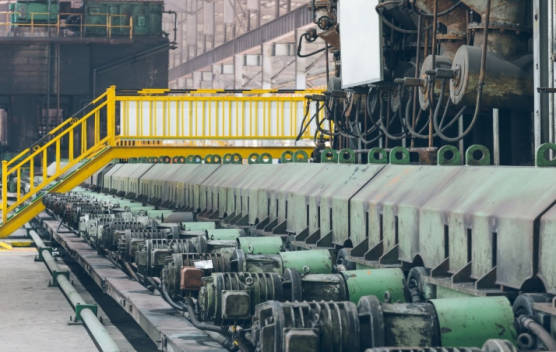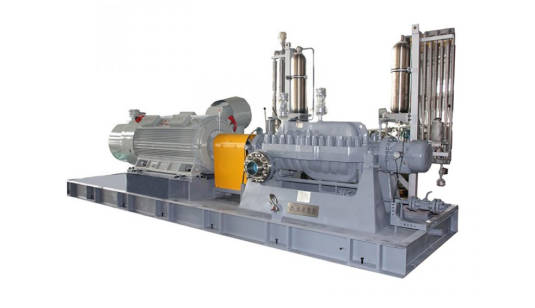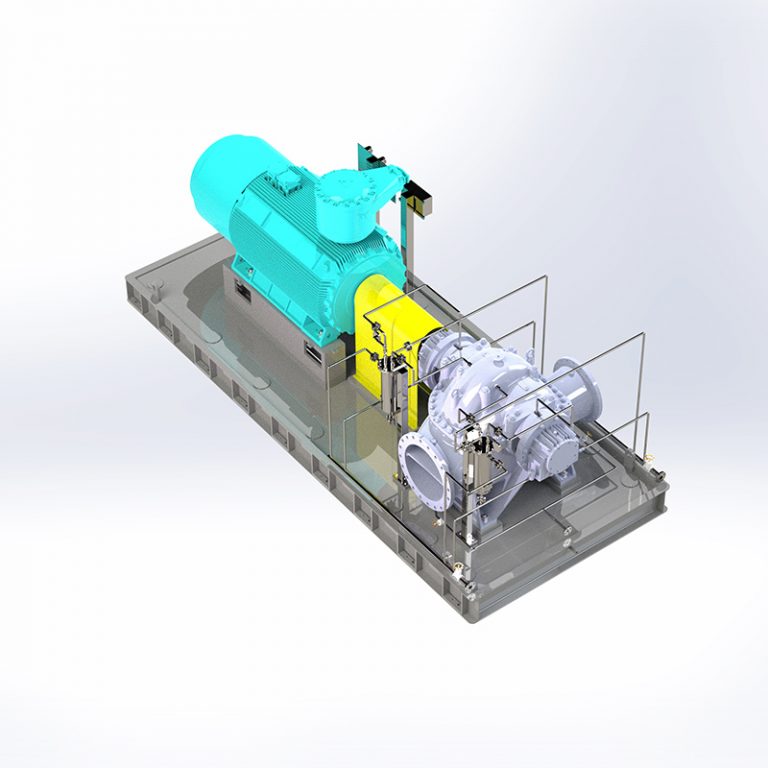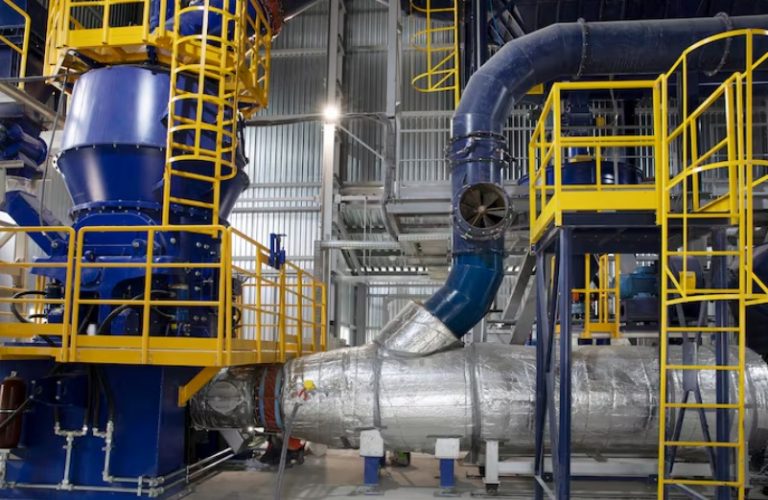
Multistage centrifugal pumps serve as the main force in many key factory methods today. They handle boiler feed-water setups in refineries. They also manage high-pressure input in CCUS tasks. They use several impellers in a row. This creates the great forces needed to shift fluids in hard use. However, this strength and detail also indicate that their ongoing steadiness and safety rely fully on strict running steps and a forward-thinking upkeep approach.
A wrongly run or badly kept multistage pump is not merely a poor performer. It poses a major work hazard. This outline offers a full summary of the top methods for safely running and keeping these vital items. The aim is to make sure they provide top output throughout their working span.
The Golden Rules of Safe Pump Operation
Safe running forms an ordered method that starts well before the “start” switch gets hit. It goes on until the pump shuts down completely.
Critical Pre-Startup Checks
Ensure Proper Priming: This stands as the top step. A multistage pump must be filled totally with liquid prior to starting. This avoids dry running. Such running can lead to severe harm to the seals and inner parts in moments.
Verify Valve Alignment: Make sure the suction valve opens fully. The discharge valve usually stays partly open, or as set by the maker’s rules. This stops excess force or motor strain at the start.
Check Lubrication: Confirm bearing cases hold the right amount of the correct oil. Poor oiling causes early bearing breakdown often.
Confirm Rotation Direction: For fresh setups or after motor fixes, quickly “tap” the motor. This checks if the shaft turns in the right way, as shown by the mark on the pump shell.
Monitoring During Operation
Once the pump runs, workers should check the main output signs on a regular basis:
Pressure: See that suction and discharge forces stay in the planned range.
Vibration and Noise: Any quick rise in shaking or odd sounds, like scraping or clanging, warns of possible issues. These may include bearing damage, wrong setup, or cavitation.
Temperature: Watch the heat of the bearings and the pump shell. Too much heat can point to oiling failure or inner fluid problems.
Proper Shutdown Procedures
To stop the pump in a safe manner, close the discharge valve slowly at first. This action prevents “water hammer.” That surge in force can harm both the pump and the pipe network. After the valve shuts, turn off the motor.
Building a Proactive Maintenance Strategy
The aim of upkeep is to shift from a reactive “repair when it fails” way to a proactive one. This stops breakdowns before they occur.
Routine Inspections: The First Line of Defense
Daily and weekly checks around the area are necessary. Workers should look for drips from the seals and shell seals. They need to verify oil amounts. They should also listen for any shifts in the pump’s noise pattern.
Preventive Maintenance: Planning for Longevity
A planned preventive upkeep program should cover duties such as:
Regular oil swaps and bearing fresh grease.
Checks and cleaning of seal rinse plans and cooling setups.
Periodic reviews of the shaft lineup between the pump and motor.
Shaking study to forecast bearing and wear ring state.

How Advanced Pump Design Simplifies Maintenance
The build of the pump itself plays a large part in how simply and well it can be kept. At Longgang, we craft our multistage pumps not only for output but also for easy service.
The Horizontally Split Case Advantage: Longgang LCD (BB3)
The Longgang LCD (BB3) pump includes a horizontally split casing. This build gives a big edge for upkeep teams. The top half of the casing can come off. This offers straight entry to the whole rotor group. It covers the shaft, impellers, and bearings. All this happens without touching the main suction and discharge pipes or the motor lineup. This cuts the time and effort for inner checks and full fixes greatly.
The Segmented Design for High Pressure: Longgang LDD (BB4)
For very high-force uses, the Longgang LDD (BB4) High-Pressure Segmented pump serves as a fine pick. Its ring-section build consists of piled stages joined by tie bolts. While harder to take apart than a split-case pump, this unit-based build proves very tough. It acts as a tested answer for services like boiler feedwater and high-pressure injection systems in CCUS tasks.
The Double Shell for Extreme Conditions: Longgang LTD (BB5)
When facing high forces along with high heat, safety and firmness rank high. The Longgang LTD (BB5) Double Shell pump is crafted for these harsh states. It holds an inner casing group inside a firm outer “barrel.” This build supplies fine frame strength and heat firmness. It makes the pump suited for carrying high-heat hot oil in refinery uses. Upkeep often means taking out the full inner unit as one piece. This unit can get swapped or fixed at a good speed.

Partnering with an Expert for Lifetime Support
Even the finest-built pump needs skilled backing. As a cleared provider to field chiefs like CNPC, Sinopec, and CNOOC, Longgang grasps the value of full-life aid. We give our buyers a skilled group that can help with spot setup and testing. We offer a 24-hour pledge to reply to any standard issues. We also supply fitting spare parts on time to cut idle periods.
Conclusion
Safe running and forward upkeep are not costs. They form vital outlays in the ongoing health and stability of your plant. By sticking to top methods and selecting a multistage pump crafted for both output and easy service, you can make sure your high-force setups run safely and well for many years. A link with a maker like Longgang also promises that you hold the tech backing and items required to guard your valuable assets.
FAQ
Q: What is the most important single step before starting a multistage pump?
A: The most critical step is ensuring the pump is fully primed and filled with liquid. Starting a multistage pump dry, even for a few seconds, can cause severe internal damage.
Q: How does a horizontally split-case design like the Longgang LCD (BB3) help with maintenance?
A: It allows maintenance crews to access the pump’s internal rotating assembly for inspection or repair by simply removing the top half of the casing, without disturbing the piping or motor alignment.
Q: What kind of applications are best suited for a double-shell pump like the LTD (BB5)?
A: Double-shell pumps are ideal for high-pressure and high-temperature services, such as boiler feedwater or transporting hot oil in petrochemical refineries, where safety and thermal stability are critical.
Q: What kind of after-sales support does Longgang provide for its pumps?
A: Longgang offers a comprehensive warranty and lifetime service, including free technical support, 24-hour response to quality issues, on-site technical assistance, and qualified spare parts.









